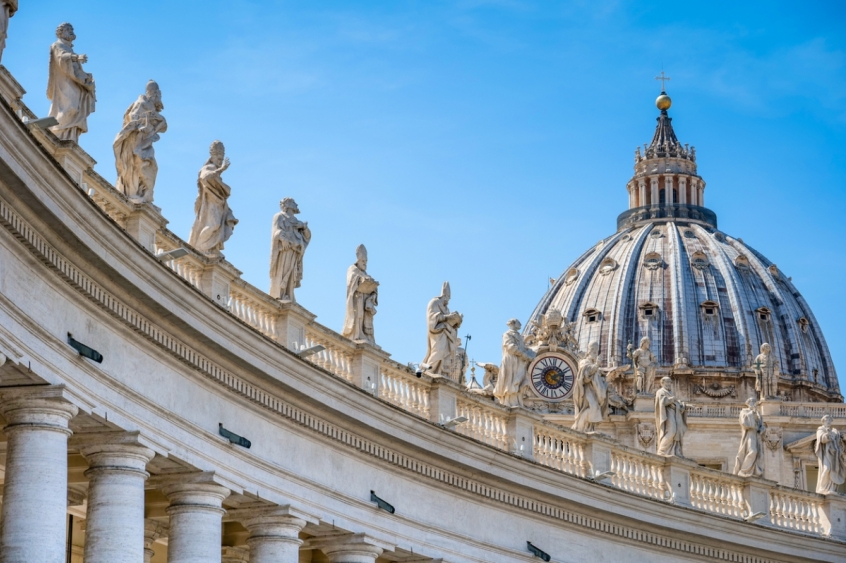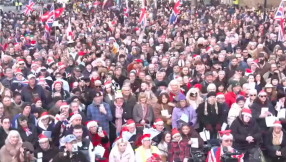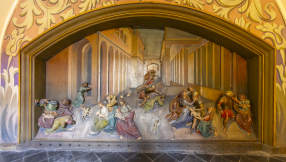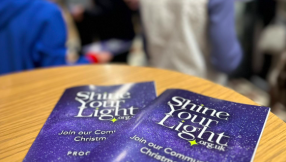
Catholic clergy and laypeople will gather at the Vatican Oct. 4-29 for a synod, or summit of bishops and lay people, to discuss synodality, with an emphasis on communion, participation and mission.
While some might dismiss the highly anticipated event as a meeting on meetings, the term synodality under Pope Francis has expanded to reflect his vision for dialogue and decision-making in the church.
"I am well aware that speaking of a 'Synod on Synodality' may seem something abstruse, self-referential, excessively technical, and of little interest to the general public," Francis said to journalists at the Vatican on Aug. 26.
The summit will bring 464 Catholic clergy and laypeople, including women, to the Vatican to discuss hot-button issues ranging from sexual abuse to LGBTQ inclusion and female ordination.
"It is something truly important for the church," the pope said.
What is the Synod on Synodality?
The synod is the result of a two-year process that started in September 2021, when the Vatican released a preparatory document and instructions on how to prepare for the summit. Catholic faithful around the world then met in their parishes to discuss the questions posed by the synod. The syntheses of those conversations were then sent to their respective bishops' conferences.
Once bishops had the opportunity to discuss — and debate — the syntheses, they sent their conclusions to the Vatican, where a group of some 30 experts, theologians and pastoral workers met in the town of Frascati near Rome in September 2022 to draft a document that would guide the next phase. This document, titled "Enlarge the Space of your Tent," was sent to the Continental Assemblies, or groups of bishops divided by continents. The Eastern churches and Catholic advocacy groups also had a chance to submit their reflections on the synodal topics.
The results of those continental discussions were sent once again to the Vatican, where officials at the synod office drafted another document, the "Instrumentum Laboris 2," that will guide discussions at the upcoming synod.
When is the synod?
On Saturday (Sept. 30), right before the synod takes place, there will be a consistory where 21 new cardinals will be made, followed by an ecumenical vigil in St. Peter's Square. Afterward, participants at the synod will travel to the town of Sacrofano for a spiritual retreat where they will get to meet and talk to one another until the eve of the synod on Oct. 3.
Pope Francis will celebrate the inauguration Mass for the synod on Oct. 4. The Vatican announced in April that the synod will be extended, meaning participants will convene again for a second time in the fall of 2024.
The monthlong synod will be sprinkled with other important gatherings and events, including Masses, pilgrimages, retreats and a prayer for migrants and refugees scheduled for Oct. 19. Attendees will pray the rosary in the Vatican gardens on Oct. 25.
Where is the synod?
Instead of taking place in the traditional synod hall, the summit will unfold at the larger Pope Paul VI Hall, which can hold over 6,000 individuals. This is a reflection of the growing number of participants at the synod.
Participants coming to Rome have found their own accommodations close to the Vatican and the multitude of restaurants surrounding the Vatican will likely become a hub for after-hours synodal discussions.
There will also be a number of other events held around the Vatican during the month of the synod. The Women's Ordination Conference, the Italian Bishops' Conference and the Diocese of Rome, for example, are organizing a series of gatherings and events that will accompany the synod.
Who will attend the synod?
There will be 464 participants at the synod and 365 will have the right to vote. For the first time, laypeople will be full voting members of the synod, compared with earlier synods where only bishops had the right to vote. An unprecedented number of women, 54, will also be attending.
Representatives from Eastern churches and high-ranking members of the Roman Curia will also be present. Pope Francis personally selected 120 delegates.
There will be spiritual assistants, 28 theologians and 34 facilitators, whose role will be to promote a synodal atmosphere at the event and encourage what the "Instrumentum Laboris" describes as "conversations in the spirit." While the spiritual assistants will go on the retreat with synod participants, the facilitators and theologians will remain in Rome to prepare for the summit.
During the proceedings, theologians and facilitators will be encouraged to write down their reflections and observations on how the synod is proceeding.
Two bishops from China will attend, having received permission from authorities in Beijing and the approval of Pope Francis. This is the second time Chinese bishops have been allowed to participate at a synod; the first time was at the synod on young people in 2018. The Vatican and China do not have formal diplomatic relations even though the two recently renewed an agreement on the appointment of bishops.
Participants were selected by the bishops' conferences but the Vatican sent a list of recommendations to follow, such as the inclusion of laypeople and especially women. Among them there are also those who disagree with the synod itself, such as U.S. Cardinal Raymond Burke, who has called the synod a "Pandora's box."
There will also be several Germans in attendance who support the Synodal Way, a consultation of bishops and lay Catholics in Germany that took place between 2019 and 2023 and proposed progressive positions on sexuality and the inclusion of women.
© Religion News Service













